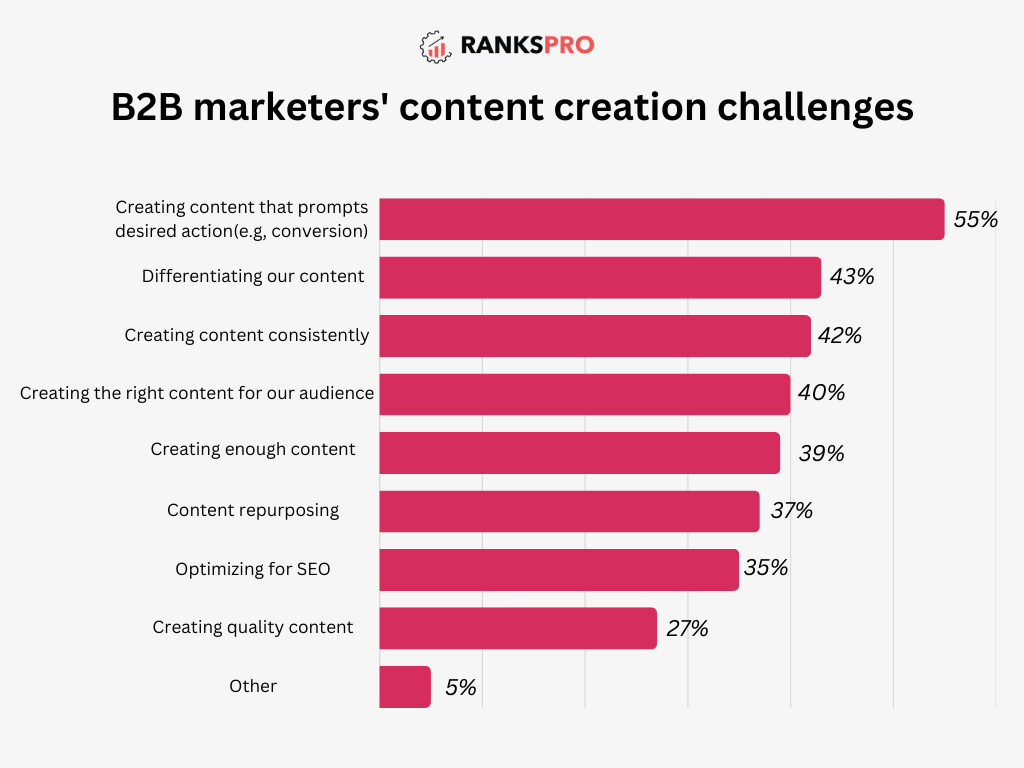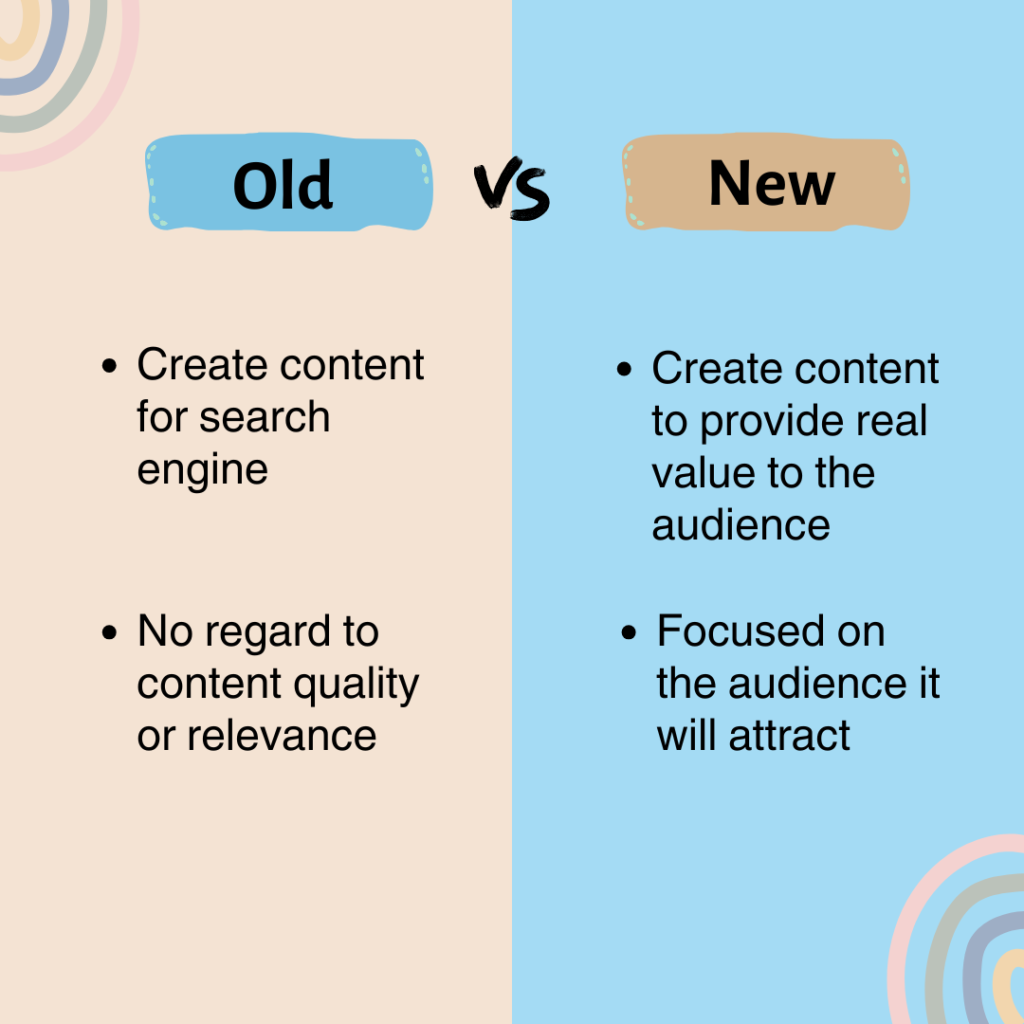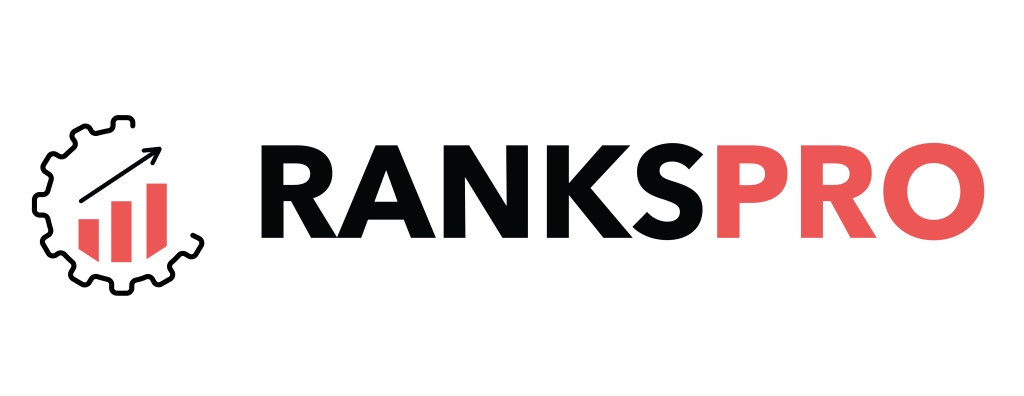In this highly competitive digital context, it is increasingly important to understand that ranking at the top of Google is not limited to keywords and backlinks; it entails a lot more, such as trust, authority, and expertise. Here is where E-E-A-T comes in: Experience, Expertise, Authoritativeness, and Trustworthiness.
Google actually does very much take into consideration E-E-A-T within its wider description of the credibility and quality of content, so that whatever to be considered a credible, well-informed, people-first ranking must include such. Without these aspects on your website, you find it challenging to visibility even with your powerful SEO strategies.
In this guide, the essential E-E-A-T principles will be dished out, including an inside look toward how they affect your ranking and strategies to better the credibility of your site to ensure that you shine in the Google search results.
So, let’s jump in and discover how to create content that not only ranks higher but also earns trust among your audiences!
What is E-E-A-T?
E-E-A-T (experience, expertise, authoritativeness, and trustworthiness) is a key component of quality guidelines defined by Google for assessing the credibility and value of online material from a user’s point of view. In other words, E-E-A-T shows Google whether a webpage gives reliable and useful information to a user.
Previously, it was E-A-T: Expertise, Authoritativeness, and Trustworthiness. But then Google revised this algorithm in December 2022 , which incorporated Experience as the fourth-ranking credence.
Here is a short breakdown of each E-E-A-T element:
- Experience: Is the author first-hand knowledgeable about the subject?
- Expertise: Does the author have thorough knowledge in the subject matter?
- Authoritativeness: Is the website or author recognized as an authority in the field?
- Trustworthiness: Are users able to depend on the content to be accurate and transparent?
Google uses E-E-A-T in order to protect users from any misinformation, especially during the topics which relate to Your Money or Your Life (YMYL) such as health, finance, or legal advice, since fake data can result in major problems.

The very reflection of such change enlarges the avenue for Google’s ranking analysis dimensions of real cognizance and insights rather than an appraisal of one piece only being content.
How does Google evaluate content using E-E-A-T?
Google does not have a specific “E-E-A-T score,” but it uses a combination of algorithms, human evaluators, and quality signals to assess content credibility. Here’s how:
- Google’s Search Quality Raters
Google employs human quality raters who follow the Search Quality Evaluator Guidelines (SQEG) to assess the quality of search results. These raters evaluate:
- The expertise and credentials of the content creator.
- The reputation of the website and its authors.
- The accuracy and depth of the content.
- The overall user experience and trustworthiness.
While these ratings do not directly impact rankings, they help Google fine-tune its ranking algorithms to favor high-quality content.
- Backlinks & Mentions (Authority Signals)
Google assesses a website’s authority by analyzing who links to it and who mentions it online. If reputable websites link to your content, it boosts your credibility in Google’s eyes.
Example: If a medical journal links to your healthcare blog, it signals that your content is trustworthy and authoritative.
- Content Quality & Depth
Google prioritizes content that is:
- In-depth and well-researched
- Accurate and up-to-date
- Free from clickbait and misleading claims
- User-friendly and engaging
AI-generated, duplicate, or thin content with no original insights is unlikely to rank well.
- Author Transparency & Credibility
Websites that clearly showcase author information, credentials, and transparent editorial policies tend to perform better in rankings.
- User Trust Signals (Security & Transparency)
Google evaluates trustworthiness by checking:
- Website security (HTTPS vs. HTTP)
- Transparency (About Us, Contact, Privacy Policy pages)
- Customer reviews and ratings (for businesses)
Example: A financial website without HTTPS encryption or clear author credentials may struggle to rank well in Google.
What Does E-E-A-T or People-First Content Mean to SEO?
In today’s digital world, SEO is no longer just about keywords and backlinks—it’s about delivering genuine value to users. Google’s E-E-A-T framework plays a crucial role in shaping people-first content, ensuring that search rankings favor high-quality, user-centric information.
1. The Shift from Keyword-First to People-First SEO
In the past, SEO relied heavily on keyword stuffing, backlink manipulation, and technical optimizations. However, Google’s evolving algorithms now prioritize content that meets user intent and provides real, helpful information.
- Old SEO: Focused on ranking for search engines
- New SEO: Focuses on providing the best user experience while aligning with search engine guidelines

With E-E-A-T, content that is authentic, well-researched, and written by credible sources gets preference in rankings.
2. E-E-A-T Helps Improve SEO Rankings
Google evaluates web pages based on how useful and reliable they are for users. When your content follows E-E-A-T principles, it gains:
- Better Search Rankings: Pages that demonstrate expertise and trust are ranked higher in SERPs
- Lower Bounce Rates: Engaging, well-structured content keeps visitors on your site longer
- More Backlinks & Mentions: Authoritative, high-quality content attracts organic links from reputable sources
- Increased User Trust: Users are more likely to trust and return to websites that appear credible
3. Makes Content ‘People-First’
Google defines people-first content as information that is created to help users rather than just to rank in search engines. Here’s what makes content truly people-first:
- Addresses real user problems: Content should directly answer questions and solve real-world challenges.
- Demonstrates first-hand experience: Google favors content where the author has direct knowledge or experience on the topic.
- Written by experts: Especially for topics like health, finance, and legal matters, Google prefers information from qualified professionals.
- Backed by credible sources: Content should link to authoritative references, studies, or trusted organizations.
- Free from manipulative tactics: Avoid clickbait, excessive ads, AI-generated fluff, or misleading claims.
| People-first SEO vs Search Engine-first SEO | ||
| Factors | People-first SEO | Search engine-first SEO |
| Purpose | To be informative and relevant | To manipulate rankings |
| Content quality | Well-researched and structured | Focused on keyword stuffing |
| Authorship | Expert opinions with credentials | Anonymous, lack of contexts |
| User experience | Engaging and mobile-friendly | Cluttered and overstuffed |
| Trust & transparency | Includes author bios and secure | Vague or unknown source links |
4. Google Rewards People-First Content
Google continuously updates its algorithms to detect low-quality content that is designed to manipulate search rankings. Content that follows E-E-A-T principles aligns with Google’s goal to:
- Provide accurate and useful search results
- Combat misinformation and fake news
- Improve user satisfaction with relevant and engaging content
By creating content that prioritizes user needs, businesses can rank higher, build credibility, and establish long-term SEO success.
How do you optimize for E-E-A-T? (Creating People-first Content)
1. Experience: Sharing proven methods with real-time examples
Google’s 2022 changes in the update made experience part of E-E-A-T and its essentialness in making content by firsthand experience. Content penned by someone who has firsthand experience can offer insights into things that are otherwise generic or AI-generated.
Here are certain proven ways to mention real-world examples in your content:
- Share real-time insights that can be aligned with the context or the topic.
- Include relevant case studies along with outcomes to show how you are experienced in the related topics.
- Guide users with tutorials or steps to implement the knowledge.
- Blend content with relevant graphics such as videos, images, or visual statistics to showcase your experience.
- Highlight reviews from your customers about their experiences.
A good example will be: if you are a chef and wanted to share some recipes, you should include necessary steps to prepare the food. Rather than just mentioning generic pointers, include images for each step to make sure your users get the relevant information.
Users find the information to be credible and, in some cases, necessary for personal experience (like product reviews, travel guides, health advice). Content that allows the authenticity of the audience and the genuineness from which that information is being received will take priority over secondhand- or recycled information in Google algorithms.
2. Expertise: Positioning Oneself As an Authority in the Subject
Expertise enables accurate and reliable information that is backed by real knowledge. By definition, content that is written by subject-matter experts in Your Money or Your Life (YMYL) niches like health, finance, and legal advice gets top priority in the eyes of Google.
Here are some tips to determine expertise in the blogs:
- Conduct in-depth research before writing
- Cite credible sources (scientific studies, government websites, industry reports)
- Include original insights and avoid generic content
- Add author bios highlighting relevant qualifications and experience
- Include quotes and expert opinions from professionals in the industry
The reader trusts all these nuggets of wisdom an author graciously gives if it comes from deep knowledge about the same subject.
It gives more ranking for expert-driven content to rank high in the search engines, especially for technical, medical, or financial disciplines. Bad research and wrong information have adverse effects like SEO penalties or loss of user trust.
C. Authoritativeness: Create a Strong Online Reputation
It is the recognized authority in your niche, and Google determines that authority based on the website’s reputation, the number of backlinks, and brand appearance. Having high-quality backlinks from authoritative websites pointing to your site is evidence that your content is trusted and respected.
Here are some proven tips to improve authority on Google with your content:
- Publishing guest posts on reputable websites boosts your credibility.
- Getting mentioned in industry news, podcasts, and expert roundups helps establish brand authority.
- Social Proof: Testimonials, Industry Recognition, and Media Coverage
- Display client testimonials and case studies that validate your expertise.
- Highlight awards, certifications, and industry recognition.
- Share media features (e.g., interviews, podcast guest appearances, mentions in authoritative publications).
Google views natural, earned links as a strong ranking factor for authority; for example, if Forbes, Harvard Business Review, or a government website links to your content, it gives you a substantial boost in your domain authority (DA).
D. Trustworthiness: Gaining Reader Confidence
E-E-A-T is based on trust. When there is no trust, expert (or authoritative) content fails to rank high. Content should, according to Google, clearly identify someone’s author and source. Similarly, ranking for websites with fake claims, misleading information, or hidden authorship is threatened.
There are signals showing that sites are unsafe if they are not under HTTPS encryption. Creating a proper set-up by adding the privacy policy, terms of service, and disclaimers increases trustworthiness.
Utilize the following tips to establish trust among your readers and audiences:
- Display author names and bios with credentials
- Provide references and citations for facts and statistics
- Disclose conflicts of interest (sponsored posts, affiliate links, medical/legal disclaimers)
- False or outdated information can damage credibility and rankings.
- Before publishing, verify facts, statistics, and industry trends.
- Cite data from trusted sources such as government websites, research papers, and industry reports.
Google punishes sites that lack security measures or facilitate deceptive practices. An example is a financial website without SSL (HTTPS) and a clear privacy policy, so such a website is less likely to rank well in Google.
Additional Strategies to Strengthen E-E-A-T
Beyond using the right tools and focusing on creating high-quality content, several additional strategies can significantly strengthen your E-E-A-T (Experience, Expertise, Authoritativeness, Trustworthiness) signals and boost your search rankings. These strategies focus on demonstrating your credibility, building trust with your audience, and creating a positive user experience.
Here are proven strategies you should implement for E-E-A-T optimization:
1. Regular Content Audits and Updates:
The digital landscape is constantly evolving, and so should your content. Regular content audits are essential for maintaining E-E-A-T. These audits involve reviewing your existing content to identify outdated information, factual errors, broken links, and areas where you can add more value.
Updating older content with fresh insights, current data, and relevant examples not only improves its accuracy and usefulness but also signals to search engines that your website is actively maintained and up-to-date, demonstrating trustworthiness.

This practice also provides an opportunity to improve on-page optimization, add internal links to newer content, and refresh multimedia elements, further enhancing user experience.
2. Structuring Content for Better Readability and Engagement
How your content is presented plays a crucial role in user perception and E-E-A-T. Well-structured content is easier to read, understand, and engage with, which contributes to a positive user experience.
Use clear headings and subheadings to break up large blocks of text, making it easier for users to scan and find the information they need. Employ bullet points, numbered lists, and tables to present information concisely and effectively.
A clean and organized layout not only improves readability but also demonstrates your commitment to providing clear and accessible information, boosting trustworthiness.
3. Using Multimedia (Images, Videos, Infographics) to Enhance Trust
Multimedia elements can significantly enhance the credibility and trustworthiness of your content. Images, videos, and infographics can help illustrate complex concepts, break up text, and make your content more engaging.
High-quality visuals demonstrate professionalism and attention to detail. When using multimedia, ensure it’s relevant to the content, properly attributed (especially for images), and optimized for accessibility (alt text for images, captions for videos).
Incorporating original multimedia, like videos featuring your team or custom-designed infographics showcasing your data, can further strengthen your E-E-A-T by showcasing your expertise and experience.
4. Engaging with Industry Experts and Featuring Their Insights
Collaborating with and featuring insights from recognized industry experts can significantly elevate your content’s authority and trustworthiness. Interviewing experts, quoting their research, or inviting them to contribute guest posts adds credibility to your content and demonstrates your connection to knowledgeable figures in your field.
When featuring expert opinions, clearly attribute their contributions and provide links to their credentials or publications. This not only builds trust with your audience but also exposes your content to a wider network of professionals.
5. Encouraging User Interaction (Comments, Q&A Sections, Testimonials)
User interaction fosters a sense of community and demonstrates that you value your audience’s opinions and feedback. Encourage comments on your blog posts by asking questions and responding thoughtfully to comments and queries.
Implementing Q&A sections allows users to get their questions answered directly, further establishing your expertise. Featuring authentic testimonials from satisfied customers or clients builds trust and social proof, showcasing the positive experiences others have had with your brand.
Actively engaging with your audience signals that you are approachable, transparent, and committed to providing excellent value, all of which contribute to strong E-E-A-T.
Track Content Ranks with RanksPro to Find E-E-A-T Optimization Scopes
Maintaining strong E-E-A-T (Experience, Expertise, Authoritativeness, Trustworthiness) is an ongoing process. You need to continuously monitor your content’s performance and identify areas for improvement.
RanksPro, an all-in-one SEO platform, can be instrumental in this process, offering a suite of tools to track your content’s rankings and pinpoint opportunities to enhance your E-E-A-T.
RanksPro combines essential SEO functionalities like keyword research, rank tracking, website audit, competitive analysis, and backlink analysis into a single platform, providing a holistic view of your content’s performance and its relationship to E-E-A-T.
Here’s how you can leverage RanksPro to find E-E-A-T optimization scopes:
- Monitor Keyword Rankings to Identify Content Gaps
RanksPro’s rank-tracking feature allows you to monitor the performance of your content for target keywords. By tracking your rankings over time, you can identify keywords where your content is underperforming or has plateaued.
- Analyze Competitor Rankings to Identify E-E-A-T Opportunities
RanksPro’s competitive analysis tools enable you to see how your content ranks compared to your competitors. By analyzing the top-ranking pages for your target keywords, you can identify what they are doing differently in terms of E-E-A-T.
- Conduct Website Audits to Identify Technical E-E-A-T Issues
RanksPro’s website audit feature can help you identify technical SEO issues that might be indirectly affecting your E-E-A-T. For example, broken links, slow loading times, or mobile-friendliness issues can negatively impact user experience, which can indirectly affect how search engines perceive your website’s trustworthiness.
- Analyze Backlink Profiles to Identify Authoritative Link Opportunities
RanksPro’s backlink analysis tools can help you identify opportunities to build high-quality backlinks to your content. By analyzing the backlink profiles of your top-performing content and your competitors’ content, you can identify potential link targets and develop a strategy for acquiring authoritative backlinks.
- Utilize Keyword Research to Discover Content Topics that Demonstrate E-E-A-T
RanksPro’s keyword research feature can help you discover new content topics that align with your expertise and demonstrate E-E-A-T. By researching keywords related to your niche, you can identify topics where you have a unique perspective or valuable experience to share.
By leveraging its features for rank tracking, competitive analysis, website audits, backlink analysis, and keyword research, you can gain valuable insights into how to improve your content’s credibility, authority, and trustworthiness.
This ultimately leads to better search rankings and increased organic traffic. RanksPro provides a comprehensive platform for tracking your content’s performance and identifying areas where you can strengthen your E-E-A-T.




